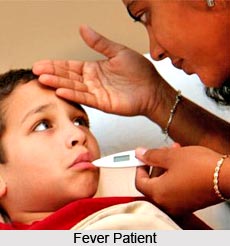 Purva roopam is a new concept in ayurvedic science. The purva roopam is the prodromal symptom which occurs in a disease during the incubation period. This is the mild symptom of the disease before the actual onset of the disease. The knowledge of poorva roopam may give the hint of the disease but actual disease cannot be diagnosed at this stage and the disease may either be manifested or may be subsided at this stage. The indication of the future disease can only be understood by the attentive patients and the good physicians only. Though, a well qualified physician can very easily detect the purva roopam of the disease that will happen but it is not the confirmed way of diagnosis. The diagnosis can be made only when the disease is presenting its symptoms to the fullest like purva roopam of fever. It is not said that fever shall happen but by identifying the symptoms, one starts taking precaution.
Purva roopam is a new concept in ayurvedic science. The purva roopam is the prodromal symptom which occurs in a disease during the incubation period. This is the mild symptom of the disease before the actual onset of the disease. The knowledge of poorva roopam may give the hint of the disease but actual disease cannot be diagnosed at this stage and the disease may either be manifested or may be subsided at this stage. The indication of the future disease can only be understood by the attentive patients and the good physicians only. Though, a well qualified physician can very easily detect the purva roopam of the disease that will happen but it is not the confirmed way of diagnosis. The diagnosis can be made only when the disease is presenting its symptoms to the fullest like purva roopam of fever. It is not said that fever shall happen but by identifying the symptoms, one starts taking precaution.
Types of Purva Roopam
There are two types of purva roopam which include Samanya and Visistha.
Samanya Purva Roopam- This is the premonition of diseases, which gives indication to some extent without giving any indication of Dosha imbalance. Samanya purva roopam vanishes before the onset of the disease.
Visishta Purva Roopam- This type of purva roopam also gives an idea of the doshas in addition to the hint of the diseases. One can get a clear idea of disease and of doshas from visishtha purva rupam. As an example, excessive yawning can be purva roopam before the vata type of fever.
It is said that purva roopam appears before the roopam (sign and symptoms), before the onset of the actual disease. When the purva roopam exists in large amount, the disease is considered as fatal. Even in diseases other than fever, all the purva roopam appears and then persists during the course of the disease in large measures and such patients are more likely to die.
In Ayurvedic medicine, purva roopam and roopam include both the signs and symptoms. The symptoms can be divided into two types which are as follows:
Subjective Symptoms- These are the symptoms recognized only by patients. These types of symptoms have no external indication for example pain, itching etc.
Objective Symptoms- These types of symptoms are detected by the observer, for example abdominal enlargement, dullness on percussion.




















